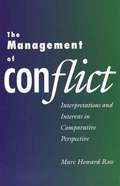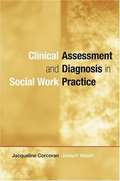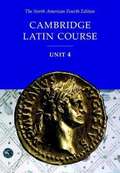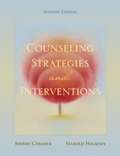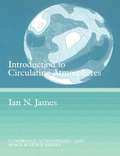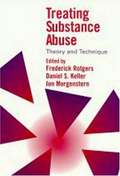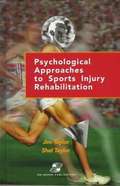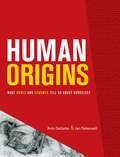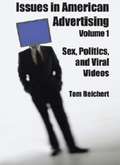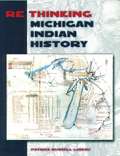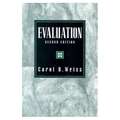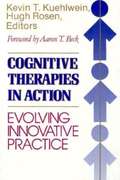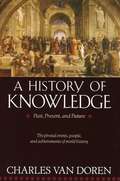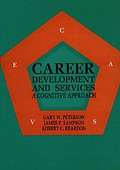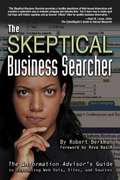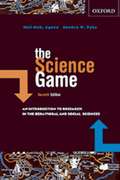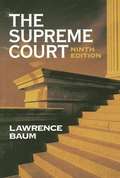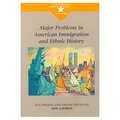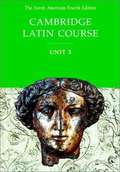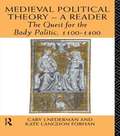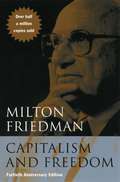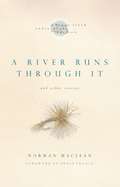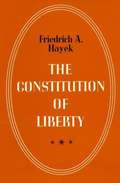- Table View
- List View
The Management of Conflict: Interpretations and Interests in Comparative Perspective
by Marc Howard RossTopics include: Political anthropology, Conflict management in cross-cultural studies, and Ethnopsychology.
Clinical Assessment and Diagnosis in Social Work Practice
by Jacqueline Corcoran Joseph WalshThis tightly focused textbook will help clinical social workers not only develop competence in the Diagnostic and Statistical Manual (DSM-IV-TR) system of diagnosis, it will also assist them to stay attuned during client assessment to social work values and principles -- a focus on client strengths, concern for the worth and dignity of individuals, appreciation of environmental influences on behavior, and a reliance on evidence-based approaches.
Cambridge Latin Course, Unit 4
by Stephanie M. Pope Patricia E. Bell Stan Farrow Richard M. Popeck Anne Shaw Peter Kesteven Joy Mellor Leslie JonesThe North American Cambridge Latin Course is a well-established four-part Latin program whose approach combines a stimulating, continuous storyline with grammatical development, work on derivatives, and cultural information. There is also a complete Language Information section, plus numerous color photographs illustrating life in the Roman world. The Course has now been fully revised and updated in the light of feedback from user schools, and includes the very best in new research. The Fourth Edition continues to offer teachers and students alike a stimulating, reading- based approach to the study of Latin.
Counseling Strategies and Interventions (7th edition)
by Sherry Cormier Harold HackneyEmphasizing the importance of interpersonal skills to counseling, this textbook contains ten chapters on topics such as recognizing communication patterns, managing the counseling session, responding to cognitive content, responding to affective content, conceptualizing issues and setting goals, interactive counseling strategies, and common challenges. The authors are affiliated with West Virginia University and Syracuse University. Annotation ©2004 Book News, Inc., Portland, OR (booknews.com)
Introduction to Circulating Atmospheres
by Alexander J. Dessler John T. Houghton Michael J. Rycroft Ian N. JamesThis book gives an account of the modern view of the global circulation of the atmosphere. It brings the observed nature of the circulation together with theories and simple models of the mechanisms which drive it. Early chapters concentrate on the classical view of the global circulation, on the processes which generate atmospheric motions and on the dynamical constraints which modify them. Later chapters develop more recent themes including low frequency variability and the circulations of other planetary atmospheres. The book will be of interest to advanced students and researchers who wish for an introduction to the subject before engaging with the original scientific literature. The book is copiously illustrated, and includes many results of diagnostic and modeling studies. Each chapter includes a set of problems and bibliographical notes.
Treating Substance Abuse: Theory and Technique
by Frederick Rotgers Daniel S. Keller Jon MorgensternDescribes five theories of substance abuse treatment and details how to translate each theory into actual practice. Material on 12-step, psychodynamic, behavioral, marital/family, and motivational approaches incorporates case examples, discussion of advantages and disadvantages of each approach, and treatment techniques. Includes a chapter on emerging pharmacological approaches. For advanced students in psychology, social work, and medicine, and for substance abuse counselors in training. Annotation c. by Book News, Inc., Portland, Or.
Psychological Approaches to Sports Injury Rehabilitation
by Jim Taylor Shel TaylorIn dedicating this guide for rehabilitation specialists, consultants J. Taylor and S. Taylor (U. of Connecticut Health Center, Farmington) refer to frustration and patience as well as to pain and expertise, recognizing that bouncing back from sidelining sports injuries entails mind as well as body. Augmented by celebrity soundbites, the authors detail the referral process for assessing psychological problems; mental influences on rehabilitation (motivation, anxiety, focus); facilitatitive techniques (imagery, using negative thinking positively, pain management, social support); return to the sport; and development of a psychological rehab program (with sample forms, program prescription summaries). Annotation c. by Book News, Inc., Portland, Or.
Comparing the States and Communities: Politics, Government, and Policy in the United States
by Normal Luttbeg Harvey TuckerBook on politics, government, and policy in the United States.
Human Origins: What Bones and Genomes Tell Us About Ourselves
by Rob Desalle Ian TattersallEver since the recognition of the Neanderthals as an archaic form of human in the mid-nineteenth century, the fossilized bones of extinct humans have been used by paleoanthropologists to explore human origins. These bones tell the story of how the earliest humans first emerged in Africa some 6 to 7 million years ago. The bones also reveal that as humans became anatomically and behaviorally more modern, they swept out of Africa in waves into Asia, Europe, and finally into the New World. Even as paleoanthropologists continued to make important discoveries, experts in genetics were looking at the human species from a very different angle. In 1953 James Watson and Francis Crick first envisioned the double helix structure of DNA, the basic building block of all life. In the 1970s it was shown that humans share 98.7 percent of their genes with the great apes--that in fact genetically we are more closely related to chimpanzees than chimpanzees are to gorillas. And most recently the entire human genome has been mapped--we now know where each of the genes are located on the DNA strands that make up our chromosomes. In Human Origins: What Bones and Genomes Tell Us about Ourselves, two of the worlds foremost scientists, geneticist Rob DeSalle and paleoanthropologist Ian Tattersall, show how research into the human genome confirms what fossil bones have told us about human origins. This unprecedented integration of the fossil and genomic records provides the most complete understanding possible of humanity's place in nature, its emergence from the rest of the living world, and the evolutionary processes that have molded human populations to be what they are today.
Issues in American Advertising: Media, Society, and a Changing World
by Tom ReichertEssays on issues in American advertising.
Rethinking Michigan Indian History
by Patrick Russell LebeauRethinking Michigan Indian History is a teaching tool that honors the Chippewa, Ottawa, and Potawatomi and the twelve federally recognized tribes of Michigan by recognizing their role and place in Michigan history-- exploring what most people know (or do not know) about them. Each lesson includes a background narrative, a set of hands-on, tactile activities, and provides easily understood and visual resources. Rethinking Michigan Indian History explores large issues of Indian stereotypes, the narrow focus on "great" Indian men, the lack of knowledge about treaties and treaty rights, and the role of maps to mislead or distort thinking about how history unfolds and the complexities of land ownership. The lesson exploring Indian stereotypes identifies their existence not only in U.S. consumer culture but also in K-12 classrooms. The goal, however, is not to rebuke the consumer for having bought Big Chief Sugar or the teacher for having young students construct one-dimensional canoes, paddles and Indians out of paper and glue but to use those activities as a demonstration of what most people know about Indians. From this point, a foundation of facts can begin to replace stereotypes in the learning process. Demonstrating further how popular influences can control knowledge, the lesson on "great" Indian men shows how the popular preference for biographies of famous Indian warriors, like Pontiac and Tecumseh or individual women, like Pocahontas and Sacagawea, narrows an understanding of Indians to symbolic representations and issues and ignores their ongoing culture. The lesson on Indian treaties and maps explains and visually shows the reason the Chippewa, Ottawa, and Potawatomi lived in Michigan in 1760 and live in Michigan today in roughly the same places. Treaties are explored in a manner understandable to fourth graders through adults.
Evaluation: Methods for Studying Programs and Policies
by Carol H. WeissThis timely and accessible guide on the conduct of evaluation studies explores how we apply research methods in evaluating social programs, illustrating its points with reference to a variety of fields, including education, social services, and criminal justice. Offers practical advice on understanding the reasons for the study, identifying key questions to be answered, and planning and implementing the overall design of the study, including measurement, qualitative methods of inquiry, data collection, analysis, reporting, and dissemination. Stresses that understanding the underlying theory of the program is essential to developing the most appropriate evaluation, and emphasizes the need to take ethical considerations into account all along the course of the study. Covers meta-analysis, cost-benefit analysis and includes a non-technical discussion of the logic of data analysis. Includes references to further sources on measurement, existing longitudinal data sets, statistics, and qualitative analysis. For professionals in psychology, sociology, public health, public policy/affairs, education, and criminal justice.
Cognitive Therapies in Action: Evolving Innovative Practice
by Kevin T. Kuehlwein Hugh RosenOffers an overview of the broad range of cognitive therapeutic approaches, including state-of-the-art innovations. The authors present extensive case examples to demonstrate how to apply these therapy models to a range of clients, including those suffering from psychoses and personality disorders.
A History of Knowledge: Past, Present, and Future
by Charles Van DorenA one-volume reference to the history of ideas that is a compendium of everything that humankind has thought, invented, created, considered, and perfected from the beginning of civilization into the twenty-first century. Massive in its scope, and yet totally accessible, A HISTORY OF KNOWLEDGE covers not only all the great theories and discoveries of the human race, but also explores the social conditions, political climates, and individual men and women of genius that brought ideas to fruition throughout history. "Crystal clear and concise... Explains how humankind got to know what it knows." Clifton Fadiman.
Career Development and Services: A Cognitive Approach
by Gary W. Peterson James P. Sampson Robert C. ReardonThe purpose of this text is to enable practitioners and future practitioners to establish career development services that will assist clients in developing their abilities to use self-knowledge and career information to solve career problems and to make decisions wisely. The text is based on cognitive information processing theory, a comprehensive paradigm derived from a rapidly expanding theoretical and research base in cognitive psychology. The book was written expressly to join theory and practice by taking a comprehensive psychological theory and logically extending its implications to the theory and practice of career development. We have made a concerted effort to design a book that can be used as a classroom text as well as a field guide for practice.
The Skeptical Business Searcher: The Information Advisor's Guide to Evaluating Web Data, Sites, and Sources
by Robert BerkmanFocusing on free sources, Berkman (editor of The Information Advisor newsletter) arms business searchers with techniques for finding reliable, accurate company and industry data on the Web. He covers strategies to use before turning to a Web search engine (libraries, pre-screened sources, indexes and directories, weblogs) but also has plenty to say about effective use of search engines themselves. He provides tips on evaluating information for reliability and bias, and discusses big-picture topics like building up personal knowledge and search intuition. Annotation ©2004 Book News, Inc., Portland, OR (booknews.com)
The Science Game: An Introduction to Research in the Behavioural and Social Sciences (7th edition)
by Neil Mckinnon Agnew Sandra W. PykeUsing quirky and sometimes irreverent examples to provide an overview of social science methodology, this new edition of the popular text has been substantially revised to include an in-depth consideration of current hot topics in the constantly evolving field of scientific research, including the trend away from 'hard' (quantitative) research to 'soft' (qualitative) research, advances in computerized analysis of statistical data, and the increasing focus on the cultural context of research. Part One explores the strengths and limitations of common sense methods of solving puzzles and demonstrates how the scientific method significantly improves our ability to check the reliability and validity of theories. Part Two introduces the reader to two pre-scientific methods of problem solving: the after-the fact and the before-and- after methods. After noting the strengths and limitations of these pre-scientific methods, the authors explain how the control-group procedure, the classic example of the scientific method, helps overcome the major limitations of the after-the-fact and before-and-after methods. Part Three explores how scientists measure the internal and external validity of research results. Part Four examines the methods scientists use to assess subjective information through qualitative research methods: questionnaires, interviews and attitudes and personality scales. Naturalistic observations and archival research extend the reach of social sciences into areas that more controlled research methods cannot go. Part Five sets out the basic rules for tying numbers to objects and events, how numbers can be used to summarize and describe large amounts of information, and how mathematics helps us to bridge the gap between the known and the unknown. Part Six charts an explosion of ethical challenges as science pushes its way into every nook and cranny of our lives. Chapter Fourteen focuses on how scientists may communicate their scientific news clearly and effectively. Part Seven engages in a wide-ranging discussion of the history of science and explore how gender influences scientific research.
Diversity in Sport Organizations
by George B. CunninghamWriting for undergraduate and graduate students, Cunningham (sport management, Texas A&M U.) discusses how diversity affects sports organizations, devoting attention to aspects of race, sex and gender, age, disability, obesity, religion, sexual orientation, and social class. Following an overview of diversity, approaches to its study, and an examination of prejudice and discrimination, he details compositional and relational types, and ways to manage workplace diversity. Both author and subject indexes are included. Annotation ©2007 Book News, Inc., Portland, OR (booknews.com)
The Supreme Court (9th edition)
by Lawrence BaumBaum (political science, Ohio State U.) presents a short guide for readers who know a lot or a little about the highest court in the US. No dates are noted for earlier editions; this one reflects new scholarship and developments such as the Bush v. Gore case and its repercussions. Cited in Books for College Libraries, 3d. ed. Annotation ©2004 Book News, Inc., Portland, OR (booknews.com)
Major Problems in American Immigration and Ethnic History
by Jon GjerdeThis unique volume explores such themes as the political and economic forces that cause immigration; the alienation and uprootedness that often follow relocation; and the difficult questions of citizenship and assimilation.
Cambridge Latin Course, Unit 3
by Stephanie Pope Patricia E. Bell Stan Farrow Richard M. Popeck Anne Shaw Joy Mellor Leslie Jones Peter Kesteven Neil SuttonThe North American Cambridge Latin Course is a well-established four-part Latin program whose approach combines a stimulating, continuous storyline with grammatical development, work on derivatives, and cultural information. There is also a complete Language Information section, plus numerous color photographs illustrating life in the Roman world. The Course has now been fully revised and updated in the light of feedback from user schools, and includes the very best in new research. The Fourth Edition continues to offer teachers and students alike a stimulating, reading-based approach to the study of Latin.
Medieval Political Theory: The Quest for the Body Politic, 1100-1400
by Cary J. Nederman Kate L. ForhanA textbook anthology of important works of political thought revealing the development of ideas from the 12th to the 15th centuries. Includes new translations of both well-known and ignored writers, and an introductory overview.
Capitalism and Freedom (40th Anniversary Edition)
by Milton Friedman Rose D. FriedmanHow can we benefit from the promise of government while avoiding the threat it poses to individual freedom? In this classic book, Milton Friedman provides the definitive statement of his immensely influential economic philosophy -- one in which competitive capitalism serves as both a device for achieving economic freedom and a necessary condition for political freedom. The result is an accessible text that has sold well over half a million copies in English, has been translated into eighteen languages, and shows every sign of becoming more and more influential as time goes on.
A River Runs Through It and Other Stories (25th Anniversary Edition)
by Norman MacleanThe two novellas and short story in this collection are based on Maclean's own experiences -- the experiences of a young man who found that life was only a step from art in its structures and beauty. The beauty he found was in reality, and so he leaves a careful record of what it was like to work in the woods when it was still a world of horse and hand and foot, without power saws, "cats", or four-wheel drives. Populated with drunks, loggers, card sharks, and whores, and set in the small towns and surrounding trout streams and mountains of western Montana, the stories concern themselves with the complexities of fly fishing, logging, fighting forest fires, playing cribbage, and being a husband, a son, and a father.
The Constitution of Liberty
by Friedrich A. HayekIn this classic work Hayek restates the ideals of freedom that he believes have guided, and must continue to guide, the growth of Western civilization. Hayek's book, first published in 1960, urges us to clarify our beliefs in today's struggle of political ideologies.
